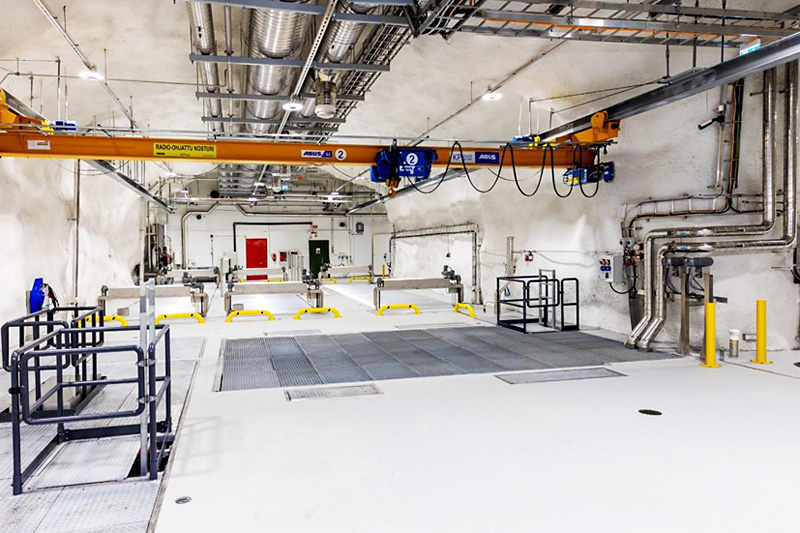Could Hydrogen Be the New Cornerstone of the Finnish Economy?

Herkko Plit from P2X Solutions, Kreetta Manninen from Fimpec Consulting, and Maiju Hirvikallio delved deep into the current topic of the hydrogen economy. In this eye-opening discussion, they explore the tremendous possibilities that hydrogen offers and the prerequisites needed for its breakthrough on a large scale.
This is a summary of the third episode of Fimpec’s “Kumppanit” podcast which discussed the possibilities of hydrogen economy in Finland. “Kumppanit” podcast is hosted by Maiju Hirvikallio, Fimpec’s Director of Communications & Marketing. The podcast is available for listening in Finnish on Spotify.
“Hydrogen economy could bring tens of billions in investments to Finland and create even hundreds of thousands of jobs in the long run. It could become the new economic cornerstone of our country,” says Herkko Plit, who is an expert of the hydrogen economy and is currently building Finland’s first industrial-scale green hydrogen and synthetic methane production facility in Harjavalta, Finland through his company, P2X Solutions.
Currently, the hydrogen economy is primarily about potential, as investment decisions have not been made extensively in Finland, although there are many investment intentions. Plit, however, is convinced that the hydrogen economy is inevitably coming. Hydrogen’s strengths lie in its environmental friendliness and versatility, with applications ranging from industry to transportation and from fertilizers to food preparation.
“We do not yet have a green hydrogen market in Finland. It is still being created, along with the demand for green hydrogen products and value-added products that are essential to the hydrogen economy. It is crucial for everyone to understand that the hydrogen economy is important and necessary. Without the widespread adoption of hydrogen, we cannot achieve the requited goals to stop global warming. Through this, hydrogen will play a significant role. The hydrogen economy will emerge, and the only question is how long it will take to emerge on a larger scale.”
“I see that the hydrogen economy offers immense potential and that it is one of the significant ways to make our society more sustainable in Finland. Now, everyone needs to believe in this change and start working on it. That’s how we will make it succeed,” Plit states.
Desire for hydrogen economy is strong in both Finland and the EU
Plit is not alone in his view. The desire to promote the hydrogen economy exists at both EU and Finnish level. Kreetta Manninen, Head of Green Transition & Sustainability at Fimpec Consulting, reminds us that the EU’s goal is to have one-fifth of final energy consumption in hydrogen derivatives or hydrogen-related products by 2050, and even higher estimates have been put forward. Finland, on the other hand, has expressed its desire to produce over 10 percent of European hydrogen production, which is an important signal, according to Plit, and pushes forward fossil-free investments. He says that the interest is high among businesses as well.
“There are more than 80 companies in the hydrogen cluster, and Finnish companies have widely recognized that the hydrogen economy is a critical factor to be involved in. The cold fact is that there are very few investments at the moment. Now we are waiting for decisions to push the investment intention forward and turn it into an investment boom.”
Getting investments started with the right regulation
Plit emphasizes that this is a crucial time if we want to harness the potential of the hydrogen economy in Finland. To initiate investments and accelerate development, government measures and the right regulations are needed.
“Political decision-makers must ensure that there are conditions for market growth. There has been much discussion about how the state should support the hydrogen economy and how much support should be given to investments. In this respect, we are behind the rest of the world. In the United States, the Inflation Reduction Act allows support. On the other hand, the EU has responded by relaxing national support policies, leading to countries like Germany and France providing billions in support for their projects.”
Finland may not be able to do the same, but according to Plit, we can take actions that create demand. This means creating regulations that compel the use of hydrogen or synthetic fuels. For example, he mentions mechanisms like fuel distribution obligations or procurement support for hydrogen vehicles in transportation.
“In that regard, policymakers have a chance to prove themselves. We have four wild cards in Finland that support the hydrogen economy, namely cheap wind electricity in Europe, a lot of biobased carbon dioxide needed for making synthetic fuels, pure water, and a stable electricity grid.”
“If we don’t mess up this starting point, but get investments moving forward, we could have hydrogen production of six to ten gigawatts by 2030. That would mean investments of several tens of billions of euros and, if not exactly 100,000 jobs, then close to such a number. It would certainly play a significant role in turning around Finland’s debt and challenging economic situation. In a way, the hydrogen economy could be the new economic cornerstone in Finland.”
Plit also brings up one more thing that government should pay attention to, which is permitting processes that need to be done sensibly.
“The process needs to be more straightforward. Fortunately, the current government has taken a stance on this issue, aiming for one-stop permitting and speeding it up. This is a key factor. These things have come up concretely when pioneering the Harjavalta factory project.”
Now is the time to jump onboard with hydrogen economy
Plit believes that in the case of green hydrogen, supply will create demand, as long as the conditions are in place. Regulation plays a crucial role here because, initially, clean energy products for the green transition are more expensive than their fossil counterparts.
“In my view, it’s not about paying extra, but I see that companies that join the hydrogen economy now will be the winners of the future. Regulation will evolve in a way that limits the possibilities of using fossil products and even completely excludes them. This means that at some point, demand will surge to the point where it exceeds supply. Then, those who have entered this early business are the winners.
The desire to create a Finnish hydrogen market made Plit a hydrogen pioneer in Finland
Herkko Plit, who has held various positions at TVO, Fortum, the Ministry of Economic Affairs and Employment, the European Commission, and Baltic Connector Ltd., also reveals what motivated him to clear the way for the hydrogen economy in Finland.
“Pioneers are always needed. My background was that I wanted to create a Finnish hydrogen market. And there is no market if there is no production. We are solving that chicken-and-egg problem in our own way at P2X,” he says.
“Kumppanit” podcast page (in Finnish)


